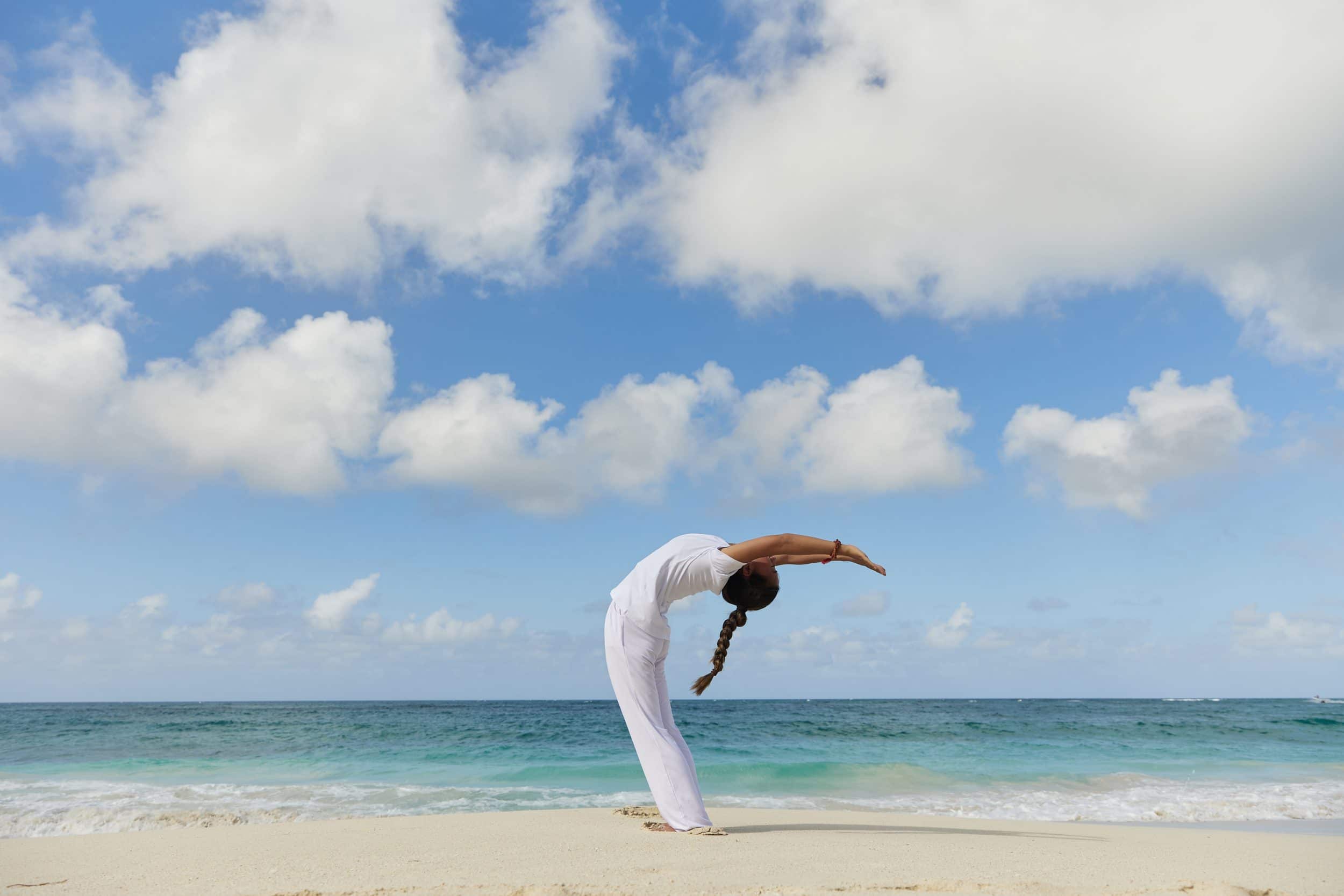Sivananda Bahamas Blog
Expand Your Horizons …
Our Blog
Daily Worship of the Sun: Benefits Plus How-To of Sun Salutations or Surya Namaskar
(from the Complete Illustrated Book of Yoga by Swami Vishnudevananda)
This exercise is called Surya Namaskar because it is practiced in the early morning facing the sun. The sun is considered to be the deity for health and long life. In ancient days, this exercise was a daily routine in the daily spiritual practices. One should practice this at least twelve times by repeating twelve names of the Lord Sun. This exercise is a combined process of Yoga asanas and breathing. It reduces abdominal fat, brings flexibility to the spine and limbs, and increases the breathing capacity; it is easier to practice asanas after doing Surya Namaskar.
Before students practice the more complicated and difficult postures, the spine should acquire some flexibility. For a stiff person, the sun exercise is a boon to bring back lost flexibility.
There are twelve spinal positions, each stretching various ligaments and giving different movements to the vertebral column. The vertebral column is bent forward and backward alternately with deep breathing. Whenever the body is bent forward, the contraction of the abdomen and diaphragm throws out the breath. When the body bends backward, the chest expands and deep breathing occurs automatically This way, flexibility increases and breathing is corrected; moreover, it mildly exercises the legs and arms, thus increasing the circulation.
Below you will find the 12 steps of 1 round of Surya Namaskar on the right side. Repeat the steps on the left side. Do this 6 times on each side.
The 12 Steps of Surya Namaskar by Swami Vishnudevananda
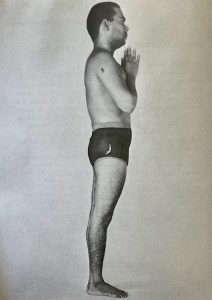
Position No. 1
Face the sun. Fold the hands. Legs together, stand erect.
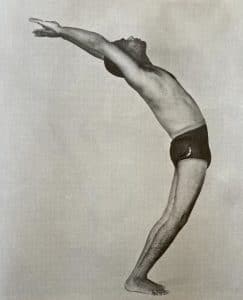
Position No. 2
Inhale and raise the arms. Bend backwards.
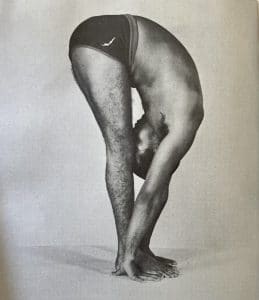
Position No. 3
Exhale and bend forward till the hands are in line with the feet. Touch the knees with your head. In the beginning, the knees may be slightly bent until the head can touch them. After some practice, the knees should be straightened.
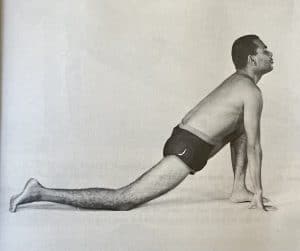
Position No. 4
Inhale and move the right leg away from the body in a big backward step. Keep the hands and left foot firmly on the ground, bending the head backward. The left knee should be between the hands.
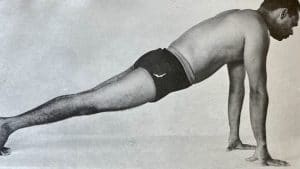
Position No. 5
Inhale and hold the breath. Move the left leg from the body and, keeping both feet together and the knees off the floor, rest on the hands (arms straight) and keep the body in a straight line from head to foot.

Position No. 6
Exhale and lower the body to the floor. In this position, known as sastanga namaskar or eight-curved prostration, only eight portions of the body come in contact with the floor: two feet, two knees, two hands, chest, and forehead. The abdominal region is raised and, if possible, the nose is also kept off the floor, the forehead only touching it.
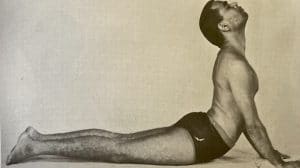
Position No. 7
Inhale and bend backward as much as possible, bending the spine to the maximum.
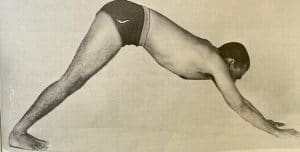
Position No. 8
Exhale and lift the body. Keep the feet and heels flat on the floor.
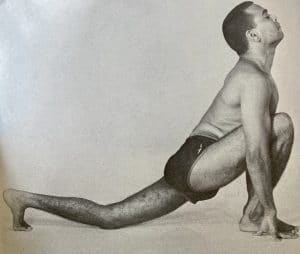
Position No. 9
Inhale and bring the right foot along the level of the hands; left foot and knee should touch the ground Look up, bending the spine slightly. (Same as Position No. 4)
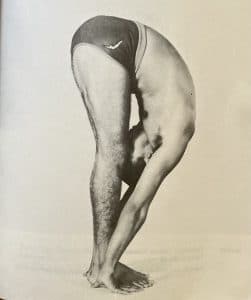
Position No. 10
Exhale and bring the left leg forward. Keep the knees straight and bring the head down to the knees as in the third position.
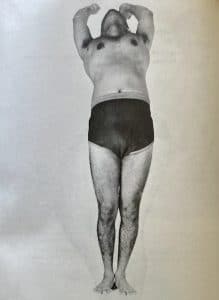
Position No. 11
Raise the arms overhead and bend backward inhaling, as in Position No. 2.
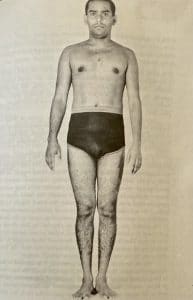
Position No. 12
Exhale, drop the arms, and relax.
A Commentary on Surya Namaskar by Swami Sivananda
(from Yoga Asanas, by Swami Sivananda)
In the system of Surya Namaskar are combined several Yoga postures with rhythmic breathing, rapid movement, sunbathing and prayerful contemplation of the divine power that the sun represents. We are asked to practice this Surya Namaskar facing the morning sun, bathing our whole body in the life-giving rays of the sun, the giver of light, life, joy and warmth to the whole world.
Surya Namaskar consists of twelve postures or stages. One posture smoothly and gracefully flows into the next. There is fairly vigorous movement which builds up the muscles too, yet it conforms to the vitally important rule in Yoga that there should be no undue strain or violence to the practice. Hence the extraordinary and unique result: after the practice, one does not feel tired and exhausted as it often happens in mere physical culture, but one feels thoroughly refreshed.
Of still greater importance is the inner mood with which Surya Namaskar is done. Inwardly watch every little movement, becoming aware of every change that takes place in the body, especially the spine. The mind must be quiet and observant to do this, and after a few months of practice, this awareness will grow.



